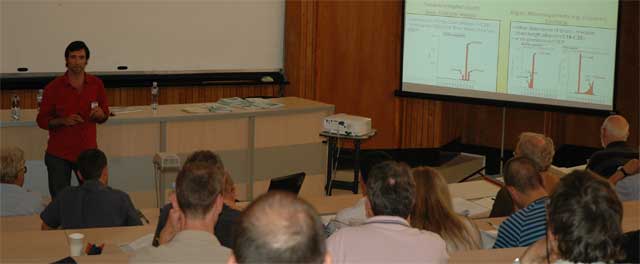LOESSFEST'09 | Aug. 31st – Sept. 3rd, 2009 |Novi Sad-Serbia
N-Alkanes as Molecular Fossils and Biomarkers in Loess-Paleosol Sequences – A Review
Buggle, B.1, Zech, M.1,2, Glaser, B.2
1Soil Physics Department, University of Bayreuth, D-95440Bayreuth, Germany;
2Chair of Geomorphology, University of Bayreuth, D-95440 Bayreuth, Germany
N-alkanes are important compounds of epicuticular plant waxes. Characteristic distribution patterns of n-alkane homologues are used for chemotaxonomic differentiation of certain plant species or plant types. Due to their relative recalcitrance, n-alkanes have furthermore the potential to serve as markers (so-called biomarkers) for different paleovegetation types (e.g. trees vs. grasses) in sedimentary records. This type of biomarker has been well established in paleoenvironmental studies on marine and lake sediments, as well as on peat deposits. First studies investigating the potential of this compound class as biomarkers and climate proxies in loess-paleosol sequences have been published only 7 years ago. Since that time an increasing number of studies proofed that fossil n-alkanes may provide valuable paleoenvironmental information also in loess-paleosol archives.

Here, we will give an overview on the fundamentals and recent developments of the n-alkane approach. It will be shown why and how these compounds may preserve not only information about changes of the paleovegetation but also about paleoclimate conditions. However, we will also point to possible pitfalls of a traditional straight forward interpretation of these proxies and highlight new approaches to account for them. With respect to loess sites of archaeological interest, also insight will be given in the value of certain n-alkane patterns as fire and, respectively, charring indicator.
Outlooking, we will shed light on the potential of compound specific isotope measurements on these biomarkers.
The review will be fed by published as well as up to now unpublished results from various loess paleosol sequences of the world but with special focus on sites from the Danube Basin.



